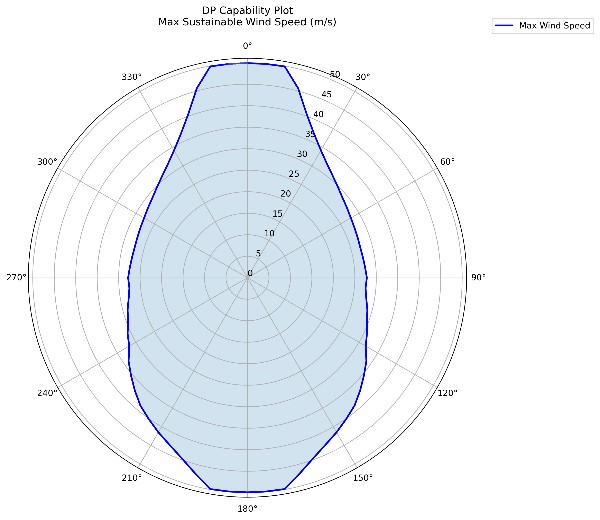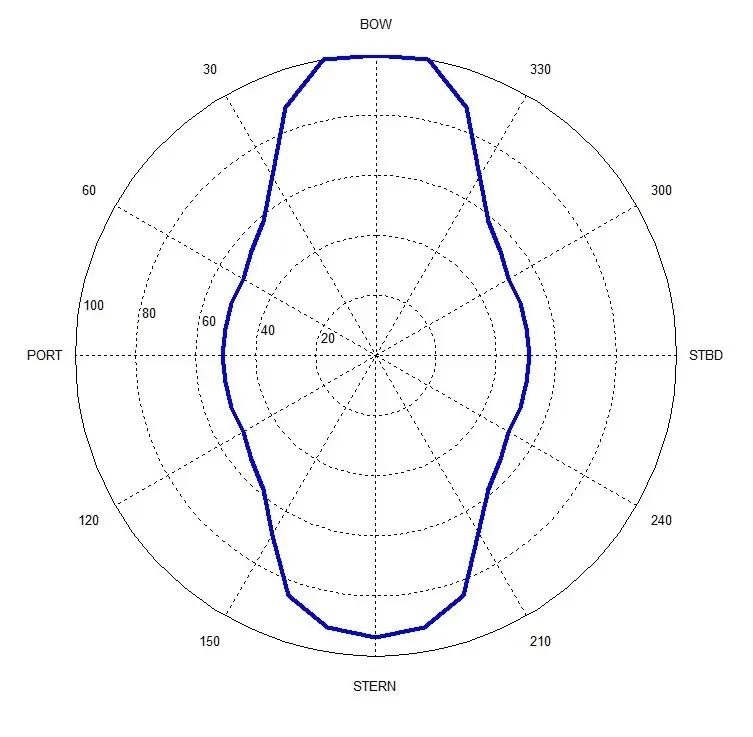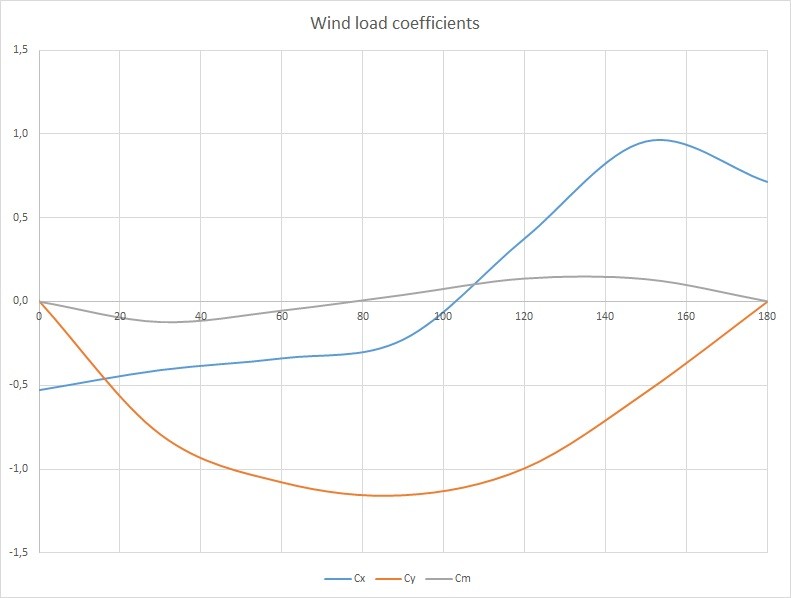Dynamic Positioning (DP) is the onboard system that allows a vessel to control it’s position using its power plant against the sea forces and environmental influences such as wind, automatically or by manual command. This system integrates in a closed loop data a wide variety of sensors, the vessel seakeeping capabilities and all thrusters to enable a precise and secure station-keeping without any mooring line.
It shows the relationship between wind direction and intensity, waves and currents, and the vessel’s ability to maintain its position. This analysis is essential for maritime operations that require high positioning accuracy.
Dynamic Positioning has become a cornerstone of the modern maritime offshore industry:
- Drillships & FPSOs – Maintain position for offshore drilling and production.
- PSVs & AHTS Vessels – Support offshore platforms with supply and anchor handling.
- Construction & Subsea Vessels – Perform cable laying, installations, and maintenance.
- Wind Farm Installation Vessels – Deploy and service offshore turbines.
- Research Vessels – Conduct oceanographic studies with minimal disturbance.
- Cruise Ships & Ferries – Enhance maneuverability for docking and restricted areas
With such a complex system, many terms have been coined to describe DP. “DP level”, “DP class “and “DP capability” are sometimes thrown around as interchangeable term when in fact each one describes a particularity of the system.
Dynamic Positioning Class
According to IMO guidelines, describes the overall robustness of the system. From less robust to more robust, they are:
- DP1: Features automatic and manual position and heading control without redundancy. A single fault can lead to loss of position. Not very common in offshore vessels. Some crew transfer vessels are within this group.
- DP2: Incorporates redundancy such that no single fault in an active (e.g., generators, thrusters, control systems, etc…) or static component will cause a loss of station-keeping. This includes failures like fire or flood in a single compartment, with the system automatically switching to its stand-by equipment without drift. This is quite common nowadays.
- DP3: Similar to Level 2 but with additional segregation of systems to withstand more severe incidents, such as fire or flood in any one compartment without loss of position. Physical separation of all systems, from generators to power buses, is a design requirement
Each classification society has its own nomenclature to describe Dynamic Positioning Class, and requirements to be considered a certain class. Keep in mind these notations are constantly updated so it’s important to always check the latest version.
Dynamic Positioning Levels
Is often used when describing the capability of the vessel to keep its station keeping against weather conditions. A complete analysis of the extent of DP capabilities may require complex calculations and precise oceanographic data. DP levels, as used by the industry, standardize the level of accuracy to be used in a capability analysis by defining an assessment method. From generalist to more accurate:
- Level 1: A static or quasi-static calculation designed for monohull vessel, based on static balance of sea forces against ship thrust capability. Environmental loads are simplified by guidelines and static. This level is adequate for power plant dimensioning. Is generally much more conservative in estimating external loads than higher levels
- Level 2: As per level 1, accounting for the particularities of the vessel. The analysis is quasi static. It is adequate for monohulls, semisubmersible and other offshore artifacts. Load conditions and various design margins are considered for more accurate results as compared with Level 1
- Level 3: Time domain analysis that contemplates operative constraints from the ship thrusters, ship motion, vessel time of response and environmental load oscillation.
Optionally, the environmental loads for the operational site of a vessel may be specified instead of the general ones.
DP Capability
DP Capability, simply put, is the weather conditions that the station keeping can withstand without loss of position after a suitable assessment level has been chosen. It normally is used along with the Beaufort scale, expressed in the maximum speed of wind withstand able.
This is normally expressed in the widely known capability plot, covering the vessel capability to withstand the sea forces in each direction of the 360º circle. The more outwards the point, the more forces it can withstand.
These plots may describe the maximum attainable with no redundancies or dynamic margin for sudden gusts, reflect the capability with a thruster or power bus failurer or other considerations. It is always important to know the context of the plot before drawing conclusions.
Other relevant data usually given is the thrust utilization plot which refers to the % of use of available thrust in order to balance fixed external loads. These plots refer to a preset wind speed.
Lastly, the station keeping circle is used in time domain simulations to keep track of how the vessels manage to react to the environment loads inside an operation area. This is used when evaluating the behavior thruster allocator and control loop of the ship computer, and also to define safety zones for restricted and non restricted DP use.
VICUSdt DP Plot Tool
VICUSdt has it’s inhouse developed DP plot tool which can take into consideration Class environmental forces or custom ones (fed by CFD data, model testing or any other source). Regarding ship configuration, the tool is prepared to handle practically any configuration whether its PODs or conventional propulsion. Also it can assess other configurations such as drilling rigs or semisubmersibles and non standard vessels in terms of layout.
With this tool, and VICUSdt propellers design experience, we are able to assist our customers in choosing the size and configuration of their thruster plant for optimum efficiency and cost.


Case of study
Customer: GARDLINE
Related services: MANEUVERING & DYNAMIC POSITION ANALYSIS, AERODYNAMIC FORCES AND MOMENTS
Scope of work:
- Evaluation of vessel’s geometry.
- Wind, current and wave coefficients are obtained through CFD simulations in StarCCM+.
- Evaluation of performance and suction of each thruster.
- Calculation of forces and moments acting on the vessel.
- Position keeping ability of the vessel according to ERN (Environmental regularity number)
- DP capability plot
Results:
As a result of this project, the evaluation of DP capability plot determined the limiting environmental conditions within which the vessel will be able to maintain position and heading while using DP.


